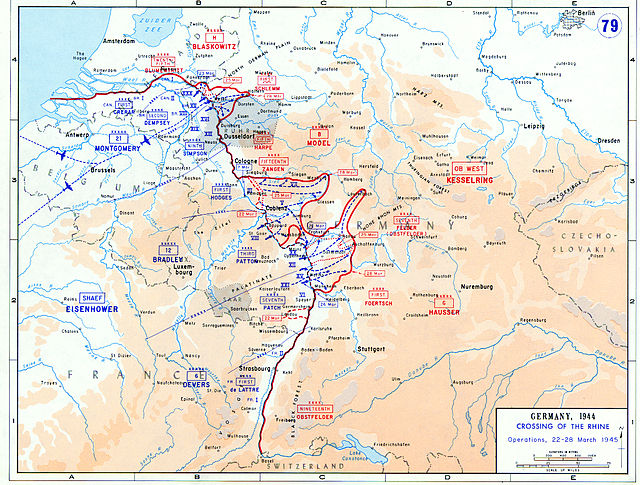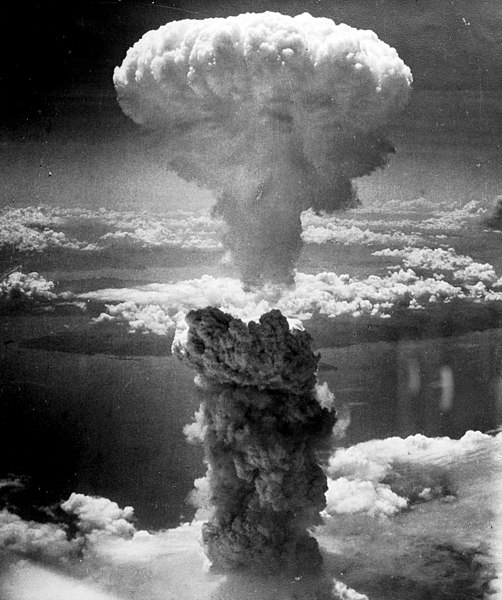Western Allied invasion of Germany
The Western Allied invasion of Germany was coordinated by the Western Allies during the final months of hostilities in the European theatre of World War II. In preparation for the Allied invasion of Germany east of the Rhine, a series of offensive operations were designed to seize and capture its east and west banks: Operation Veritable and Operation Grenade in February 1945, and Operation Lumberjack and Operation Undertone in March 1945; these are considered separate from the main invasion operation. The Allied invasion of Germany east of the Rhine started with the Western Allies crossing the river on 22 March 1945 before fanning out and overrunning all of western Germany from the Baltic in the north to the Alpine passes in the south, where they linked up with troops of the U.S. Fifth Army in Italy. Combined with the capture of Berchtesgaden, any hope of Nazi leadership continuing to wage war from a so-called "national redoubt" or escape through the Alps was crushed, shortly followed by unconditional German surrender on 8 May 1945. This is known as the Central Europe Campaign in United States military histories.

American infantrymen of the 55th Armored Infantry Battalion supported by an M4 Sherman tank move through a smoke filled street in Wernberg-Köblitz, April 1945.
The crossing of the Rhine between 22 and 28 March 1945
Douglas C-47 transport aircraft drop hundreds of paratroopers on 24 March as part of Operation Varsity.
On 25 March, after meeting Eisenhower, Churchill, General Simpson, Field Marshal Alan Brooke (head of the British Army), and Montgomery crossed to the German-held east bank of the Rhine in a landing craft
World War II or the Second World War was a global conflict between two major alliances: the Allies and the Axis powers. The vast majority of the world's countries, including all the great powers, fought as part of these military alliances. Many participating countries invested all available economic, industrial, and scientific capabilities into the war, blurring the distinction between civilian and military resources. Aircraft played a major role, enabling the strategic bombing of population centres and delivery of the only two nuclear weapons ever used in war. It was by far the deadliest conflict in history, resulting in 70–85 million fatalities. Millions died due to genocides, including the Holocaust, as well as starvation, massacres, and disease. In the wake of Axis defeat, Germany, Austria, and Japan were occupied, and war crime tribunals were conducted against German and Japanese leaders.
Image: Bundesarchiv Bild 101I 646 5188 17, Flugzeuge Junkers Ju 87
Image: Matilda tanks on the move outside the perimeter of Tobruk, Libya, 18 November 1941. E6600
Image: Nagasakibomb
Image: Bundesarchiv Bild 183 R76619, Russland, Kesselschlacht Stalingrad








